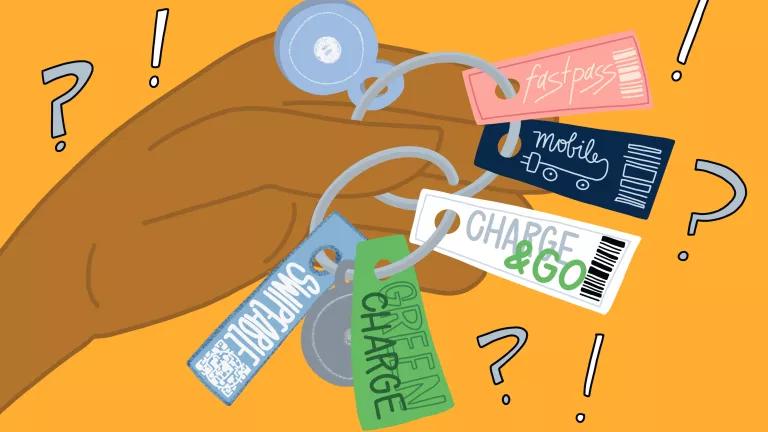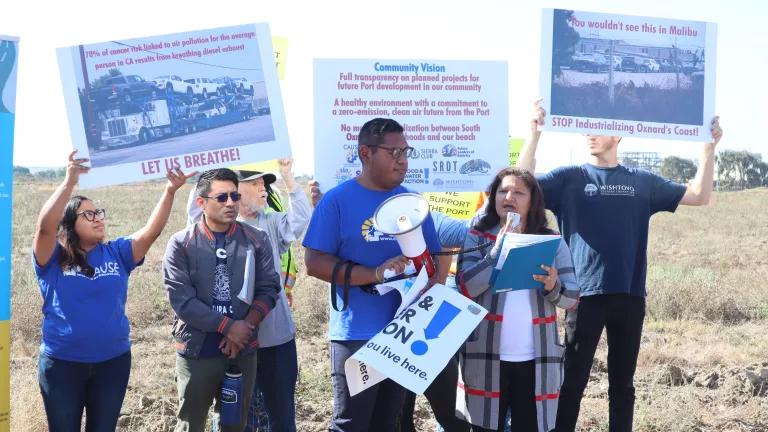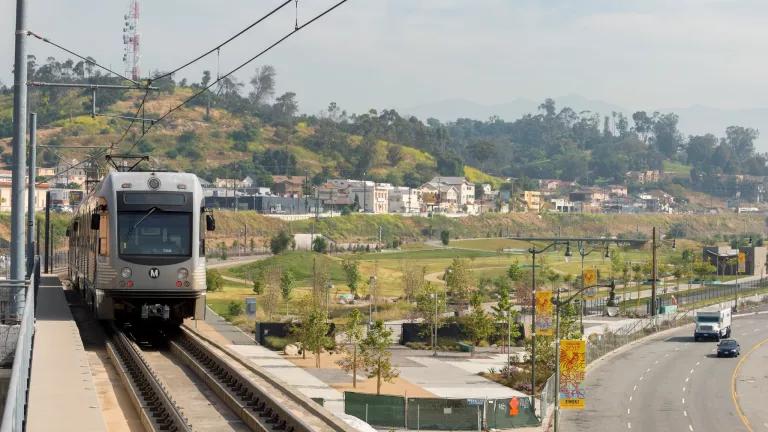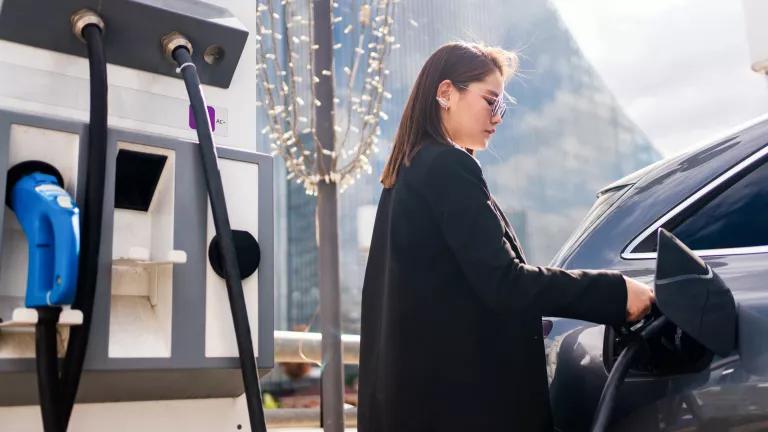California Moves to Make Paying for EV Charging Easier
California recently approved regulations for public charging stations to ensure people can pay for charging as easily as they pay for gasoline. However, a bill moving through the California Legislature would unwind those regulations, making charging less accessible and less equitable for low-income drivers.

Jessica Russo, NRDC
If you drive up to a gas station, you can be relatively confident that you’ll be able to pay with your debit or credit card—but that’s often not the case at electric vehicle (EV) charging stations. Instead of just pulling out a credit card, EV drivers are often forced to carry a mess of proprietary key fobs and cards for all the different charging networks. Fortunately, California recently approved regulations that will require credit card readers at charging stations so people can pay for charging as easily as they pay for gasoline. However, a bill moving through the California Legislature, sponsored by proprietary charging companies, would unwind those reasonable consumer regulations.
In 2013, the California Legislature passed a bill to make paying for charging as simple and convenient as paying for gasoline, sponsored by EV drivers who were frustrated with inconsistent payment experiences at public charging stations. Nearly six years later—after the industry failed to solve the problem under initial, more-flexible requirements—the California Air Resources Board (CARB) developed regulations that would set clear and consistent payment standards for new public stations. The standards, developed after a long public process, would require all new public charging stations to offer the familiar chip card readers currently seen at gas pumps, public parking meters, and even your local grocery store.
Requiring these stations to accept credit and debit payment by chip card readers would align them with existing customer payment preferences and ensure more equitable access to charging for low-income drivers who lack other payment options like mobile wallets or contactless cards. Recent surveys show that three in four drivers in the U.S. pay for gas with a card when fueling up and that the overwhelming preference is for payment by credit, debit, or prepaid card, while only 0.1% of households prefer alternative payment options like mobile apps—on par with money orders.
While the regulations require chip card readers to ensure payment options at public charging stations reflect the market where it is today, they also allow flexibility for changes in technology and consumer preferences to meet the market wherever it may be in the future. In addition to chip card readers, the regulations also “future-proof” new stations by requiring them to accept mobile payment. Notably, these payment standards merely set a floor—charging station providers are still free to exceed these minimum requirements and install any additional payment options they desire, such as contactless card readers or network card/fob readers. CARB intends to conduct a “technology review” going forward, allowing the designated minimum payment options to be updated if other technologies such as contactless credit cards or mobile payment eventually become more prevalent.
Assembly Bill 1424: A Wolf in Sheep’s Clothing
While these standards would go a long way in making paying for charging a more seamless and predictable experience for all EV drivers, a bill currently pending in the California Legislature sponsored by companies that operate proprietary charging networks would undo the regulations. Assembly Bill (AB) 1424, the “Electric Vehicle Charging Stations Open Access Act” would revoke the progress that EV drivers have already spent six years waiting for and allow EV charging companies to offer contactless cards in lieu of chip card readers—while forcing drivers who don’t have contactless cards to call 1-800 numbers if they want to pay for charging with a credit card (slogging through the same kinds of phone trees you may have used to hunt down movie times in the 90s).
Contactless cards account for only 5% of the market—and only 0.18% of credit card transactions—today. Adopting a technology with such low levels of adoption as the baseline for equitable payment access, on the speculative promise that one day it might become more prevalent, is unwise. The appropriate solution, as reflected in CARB's intent to conduct technology review, is to meet the market where it is today while allowing for changes in the future if and when the market changes.
Even if a contactless future does eventually come, it will likely be unevenly distributed. While contactless cards already only account for a minuscule percentage of cards on the market, low-income drivers are even more likely to lack contactless cards. Many low-income drivers rely on prepaid debit cards, which will be the last types of cards to integrate contactless technology (possibly lagging by several years). If these drivers can’t pull up and pay for charging with their prepaid debit cards without calling a 1-800 number and navigating a frustrating phone tree, we’ll be making EVs even less accessible to low- and moderate-income drivers.
That’s partially why the Charge Ahead California Campaign (led by the Coalition for Clean Air, Communities for a Better Environment, Environment California, The Greenlining Institute, and NRDC), which works to bring clean transportation options to the state’s most disadvantaged communities, is opposed—along with every other public interest organization that has taken a position on AB 1424. To meet California’s air quality, climate, and equity goals, we simply can’t afford to make it more difficult to pay for EV charging than it is to pay for gasoline or diesel.



